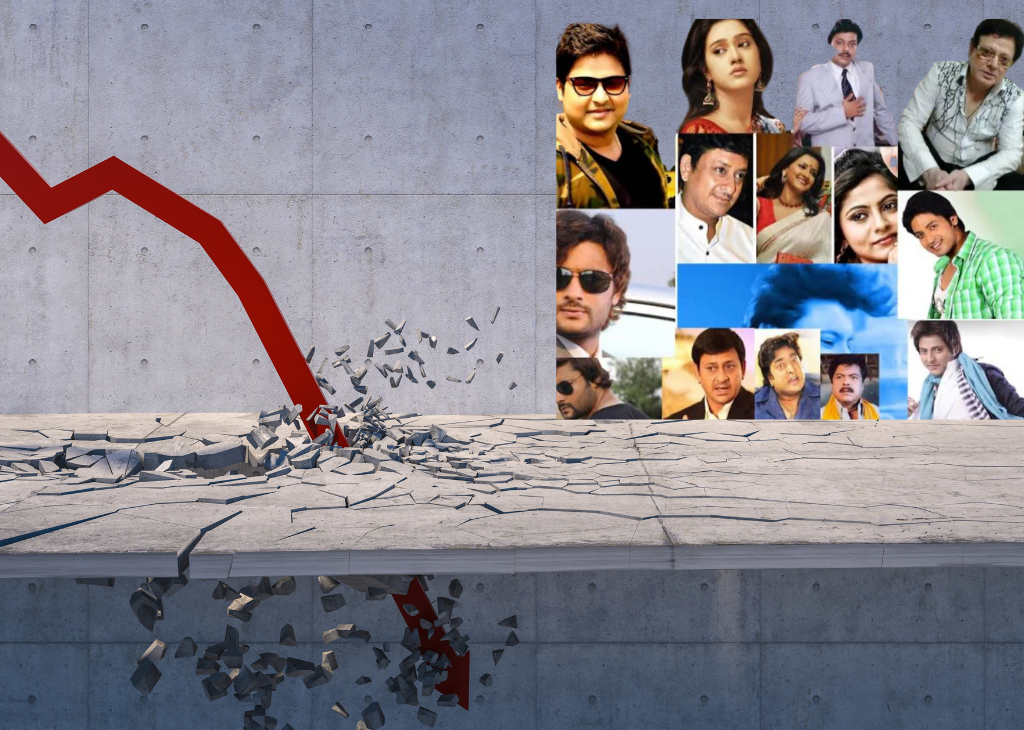Decline of the Odia Film Industry

Each regional sector brings distinct colors and tastes to India’s diverse cinema environment. Despite the glitz and glamour of Bollywood and the growth of regional powerhouses such as Tamil and Telugu cinema, the Odia film industry remains in the shadows of indifference and misery. Once a beacon of cultural expression, the sector is now struggling to find its feet, prompting many to express their sorrow on the demise of Odia cinema.

To understand the current situation of the Odia film industry, one must first examine its history. Odia cinema, which began in the early 1930s with the release of Sita Bibaha, prospered at first, generating a steady stream of highly praised and commercially successful films. The 1960s and 1970s were a golden age for cinema, with famous performers, directors, and technicians creating unforgettable film experiences. However, the industry began deteriorating in the late 1980s due to various issues.

First, a lack of infrastructure and investment could have improved expansion. Unlike regional industries such as Tamil and Telugu cinema, which received significant assistance from their respective state governments, the Odia film industry failed to obtain appropriate money and resources. This lack of financial support resulted in substandard production values and limited distribution channels, impeding the industry’s capacity to compete with its peers.

Second, the industry’s lack of visionary leadership compounded its problems. Unlike other regional film industries guided by visionary directors and producers, Odia cinema lacked strong leadership capable of leading it through tumultuous waters. The lack of creative visionaries inhibited innovation and caused storytelling to stagnate, alienating consumers looking for new stories.
Furthermore, the industry’s insularity prohibited it from adjusting to shifting audience preferences and technical improvements. While other regional industries embraced globalization and used digital channels to reach a larger audience, Odia cinema remained stuck in conventional ways, failing to capitalize on growing prospects. This unwillingness to modernize has left the sector outmoded in an era characterized by digital disruption.
In addition, the industry’s lack of institutional support exacerbated its problems. Unlike Bollywood, which has a strong ecosystem of production houses, talent agencies, and marketing organizations, the Odia film industry needs more institutional support mechanisms. This fragmented scene made it difficult for new directors and actors to enter the profession, suffocating originality and perpetuating a cycle of mediocrity.
Also, the growth of alternative entertainment channels has neglected Odia cinema. With the rise of streaming platforms delivering various content for a large group of audiences, viewers began gravitating toward non-traditional forms of entertainment, effectively eradicating regional cinema. This shift in consumer behavior delivered a significant blow to the already ailing Odia cinema industry, pushing it to the margins of cultural importance.
Despite these problems, there is promise for the Odia film industry. A new generation of young filmmakers and actors has developed in recent years, brimming with fresh ideas and a love of narrative. This new breed of talent, fueled by technological improvements and shifting audience demographics, aims to resuscitate Odia film and restore its lost splendor.

Also, attempts to promote regional cinema, such as film festivals and government grants, provide hope for the industry’s resurrection. These efforts hope to revitalize an industry on the verge of extinction by encouraging filmmaker collaboration, offering financial incentives, and promoting Odia cinema globally.

To summarize, the collapse of the Odia cinema industry is a cautionary tale of negligence and tragedy rather than an unavoidable outcome. Due to a lack of investment, visionary leadership, institutional backing, and adaptation, the industry struggles to thrive in an increasingly competitive environment. However, with the development of new talent and concerted attempts to promote regional film, there is still hope for a cinematic revival in Odisha. Only time will tell if the industry can emerge from the ashes and restore its due place in India’s film landscape.
follow our another website https://vanurmedia.com/

 English
English 















